The Wellness Issue


- LIBERIAN PROVERB
A little rain each day will fill the rivers to overflowing.



TOPDOC CLINICS MIAMI AT THE FOUR SEASONS OFFERING BODY CONTOURING, FACIAL REJUVENATION, & LASER THERAPY





- LIBERIAN PROVERB
A little rain each day will fill the rivers to overflowing.





EDITOR IN CHIEF:
JUNIOR EDITOR:
CHIEF MARKETING OFFICER:

MARKETING DIRECTOR:
SOCIAL MEDIA SPECIALIST:
GRAPHIC DESIGNER:
Brianna Connors
Riley George
Hannah Townes
Derek Archer
Lauren Rider
Sarah Cook
Riley George Catherine Pannell


Living a healthy and balanced life is a daily challenge many of us face. With the constant flow of medical advancements and health trends in lifestyle mixed with the busy rhythm of our lives, we often are prevented from learning these new techniques to improve our lives for the betterment of our health.
Here at Top Doctor Magazine, we are on a mission to bring these advancements to your attention and become a source of inspiration for those who want to live their healthiest and best lives. We seek to bridge the gap between medical professionals and consumers who are seeking to improve their overall health and wellbeing. Our contributors guarantee to constantly keep you up to date in the latest health trends and medical advancements with fresh, entertaining, and reliable content, varying from anything like nutrition and travel to lifestyle choices and the latest medical technologies!
We hope that our exclusive articles, recipes, and pieces will guide you towards self-realization, self-improvement, and willingness to help those around you better themselves in every health aspect. Because we at Top Doctor Magazine know that when you look your best, feel your best, and understand your health best, you can be the greatest version of yourself possible.

20
A Different Approach to Psychiatric Care: An Interview with Dr. Hyla Cass


Going to the gym does not always look the same for everyone. Some people are going to the gym to achieve more muscle mass; some are looking to lose weight; some are looking to gain weight; some are training for competitions. Regardless of the goals, everyone has a place in the gym setting!
Creating goals for yourself in the gym can be simple if there is a self reflection you have been pondering on for a long time. But for some people, creating realistic goals may be difficult and planning them may be even harder.

Some articles suggest using the SMART method to create goals for your gym career. SMART goes are goals that are specific, measurable, achievable, relevant and time-bound. The acronym is often used for business related goals, but they can be easily applied in your workout goals and gym goals as well!
When you have a goal or multiple goals in the gym, it can be planned out easiest when the goals are specific and clear on what you want to attain. Rather
than listing in your journal vague goals like “lose weight,” give yourself a specific number you want to attain and a specific timeline for it. If you want to be able to squat more, list the time frame you would like to reach and the specific number you think you should be able to squat in that time.
Next, make your goals measurable. If you can track your goals as you move along, you will feel more accomplished and motivated to continue! This pairs perfectly with the specific category because measurable means being sure you have numerical items attached to the goals and being able to see and feel the progress.
Achievable goals are vital if you want to continue progressing. Being realistic is vital so that you do not give up before you’ve reached them! Be real with yourself. Will you be able to gain 100 pounds of muscle mass in three months? Probably not. Make sure that you are not setting unrealistic standards upon yourself, otherwise you may leave the gym and never return.
Picking relevant goals can be a challenge for some people. Consider your life currently and choose goals that could actually be beneficial and realistic with your current life priorities. Your goals should be relevant to your own unique health journey! Challenge yourself, but make sure the goals are actually relevant to your life, otherwise you may give up on them before you even begin.
Finally, make sure your gym goals can be time-specific. Setting a timeline for your goals allows you to hold yourself accountable and stay on top of your goals. It also allows for milestones along your journey to celebrate which will prompt you to continue on in your fitness journey.
It is important to remember that depending on your gym goals, your fitness journey will look totally different than anyone else’s. If your goal is to gain muscle mass and weight, you will obviously not have the same regimen as someone trying to cut or lose body fat overall.
It is vital to not compare yourself to others in the gym when you are working out and creating your fitness plans. Different goals means different ways to exercise and conduct routines. Fitness looks different for every person depending on their own individual goals. Do not lose sight of your own goals by trying to compare yourself to others in the gym.
Here are some quick tips as you begin your fitness journey to losing weight!
Aim for about 50 minutes of movement a day. Keep your heart rate up. Try strength training of some sort at least twice a week and more if possible! Watch portion sizes while eating lots of protein.

Some quick tips to remember as you adjust your goals to gaining muscle mass are:
Pick target weights and reps that are realistic and beneficial for your body.
Pick strength exercises that work the muscles you are trying to grow.
Structure your workouts and plan accordingly to your lifestyle.
Eat lots of protein rich foods!
Looking to be more flexible overall? Here are some quick tips to keep in mind as you visit the gym and begin your fitness journey: Try some dynamic stretching before working out. Focus on static stretching after workouts.

Be gentle on tight areas, but work them properly to gain flexibility.
Stretch as often as you can!
Is your goal to run a faster mile or just improve your running overall? Here are some quick tips to keep in mind as you visit your local gym and begin the fitness journey:
Eat a proper diet!
Stay hydrated.
Maintain a moderate body weight.
Have proper techniques when running.
Have proper attire including shoes and clothing.
Be as active as possible in general.
Train your core!
Make sure you are breathing properly as you run.
EVERYONE HAS FITNESS GOALS RELATED TO THEIR OWN LIFESTYLES AND DESIRES IN LIFE. WHEN YOU START YOUR OWN JOURNEY, DO NOT BE DISCOURAGED BY OTHERS WHO SEEM MORE IMPRESSIVE THAN YOU IN THE GYM. INSTEAD, FOCUS ON YOUR OWN JOURNEY AND SEE WHAT SORTS OF TRAINING WOULD BE BEST FOR YOUR GOALS. LISTEN TO YOUR BODY AND MAINTAIN A HEALTHY BALANCE TO STAY HAPPY AND HEALTHY AS YOU ACHIEVE YOUR GOALS.
Suffer from acute or chronic wounds?

Healing shouldn’t be painful.
Experience pain-free treatment through a saline mist that reduces and removes bacteria while promoting healing. UltraMIST is a non-contact, low-frequency ultrasound that painlessly promotes healing when administered by any trained health care professional.
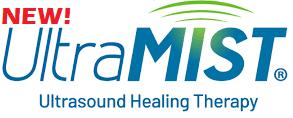

We've all been there: the piercing sound of the alarm clock jolts us awake, and our first instinct is to hit the snooze button, granting ourselves a few extra minutes of precious sleep. It's a common practice for many people, but did you know that hitting the snooze button may actually be detrimental to your health?

When you hit the snooze button and go back to sleep, you're actually disrupting your sleep cycle. Our sleep is divided into different stages, including light sleep, deep sleep, and REM (rapid eye movement) sleep which all occur in cycles throughout the night and are important for various aspects of our physical and mental well-being.
Hitting the snooze button can throw off these sleep cycles. When you drift off to sleep after hitting snooze, you're likely to enter into a new sleep cycle, but it's often not enough time to complete a full cycle. This can leave you feeling groggy and disoriented when you finally do wake up and can lead to sleep fragmentation, where your sleep is repeatedly interrupted, resulting in poor sleep quality overall.
Our bodies have an internal clock known as the circadian rhythm, which regulates our sleep-wake cycle. When you hit the snooze button and go back to sleep, you're sending mixed signals to your circadian rhythm. It confuses your body and can make it more difficult for you to wake up feeling refreshed and alert.
Consistently hitting the snooze button and disrupting your circadian rhythm can lead to a condition known as "social jet lag." This occurs when your body clock is out of sync with your daily routine, such as waking up early during the workweek and then sleeping in on weekends.
Hitting the snooze button and repeatedly delaying the start of your day can also lead to increased stress and anxiety. When you hit snooze, you're essentially delaying your responsibilities and setting yourself up for a rushed morning which can create a sense of urgency and stress, as you scramble to get ready and make up for lost time.
Furthermore, the habit of hitting the snooze button can contribute to a feeling of procrastination and lack of control over your day. It can set a negative tone for the rest of the day as you start off feeling behind and rushed. This increased stress and anxiety can have a negative impact on your mental well-being and overall health.

Hitting the snooze button also means you're missing out on valuable time in the morning to engage in healthy habits. Morning is a great time to establish a routine that sets a positive tone for the rest of your day. You can use that time to exercise, meditate, have a healthy breakfast, or simply take a few moments for yourself before the hustle and bustle of the day begins.
By hitting snooze and delaying the start of your day, you're robbing yourself of these opportunities to prioritize your health and well-being. It can also create a sense of rushing through your morning routine, which may result in skipping important self-care practices that contribute to your overall health and happiness.
Breaking the snooze button habit may take some effort, but it's a change that can greatly benefit your health and wellbeing. Here are some tips to help you kick the snooze button habit:

• Set a consistent bedtime: Make sure you're getting enough sleep by setting a consistent bedtime that allows you to get the recommended 7-9 hours of sleep each night. This will help you wake up feeling refreshed and less likely to hit snooze in the morning.
• Move your alarm clock: Place your alarm clock or phone across the room from your bed so that you have to physically get out of bed to turn it off. This can help you resist the temptation to hit snooze and make it more difficult to do so.
• Use an alarm sound that you dislike: Choose an alarm sound that you don't particularly like, so that it's less tempting to hit snooze just to make the noise stop. Avoid using your favorite song as an alarm, as it may make you associate hitting snooze with something enjoyable.
• Avoid screens before bed: Exposure to screens, such as smartphones or laptops, before bedtime can disrupt your sleep quality. The blue light emitted by screens can interfere with the production of melatonin, a hormone that helps regulate sleep. Try to avoid screens for at least an hour before bedtime to improve the quality of your sleep and make it easier to wake up on time.
• Place a glass of water by your bed: Keep a glass of water by your bed and drink it as soon as you wake up. This can help you feel more awake and alert, making it less tempting to hit snooze and go back to sleep.
Breaking the habit of hitting the snooze button may take time and effort, but the benefits to your health and wellbeing are worth it! You can develop healthier sleep habits and wake up feeling refreshed and energized, ready to tackle the day without hitting snooze. Remember, consistency and commitment are key, so be patient with yourself and keep practicing until it becomes a new healthy habit!

Almost 200 years ago, a Belgian mathematician came up with BMI to help his statistics find the average man. This work, conducted in the 1830s by Lambert Adolphe Jacques Quetelet, found its way into life insurance companies which created an “ideal weight” and became known as body mass index to screen for obesity. The equation is the ratio of body mass to height in order to categorize people as overweight, underweight, or “healthy” weight. The “healthy” weight is any adult within the 18.5 to 24.9 index.
It has been debated by many medical professionals if BMI is really the best way to categorize adults. Many medical professionals acknowledge that BMI can be useful in tracking weight trends across populations but does not account for differences in ethnic groups while targeting
athletic people since it does not distinguish muscle mass from fat. Most often, a high BMI index is prescribed with exercise and weight loss.
Body mass index is based on the height and weight ratio of a person but does not account for a variety of other things that influence weight, such as muscle mass, bone density, body composition, racial differences, or sex differences. Anyone with a BMI of 30 or higher is considered obese and is proven to have a higher risk of developing diabetes, cancer, cardiovascular diseases, and liver diseases. But some studies have actually shown that some individuals with obesity have lower cardiovascular risk and improved metabolic profiles.

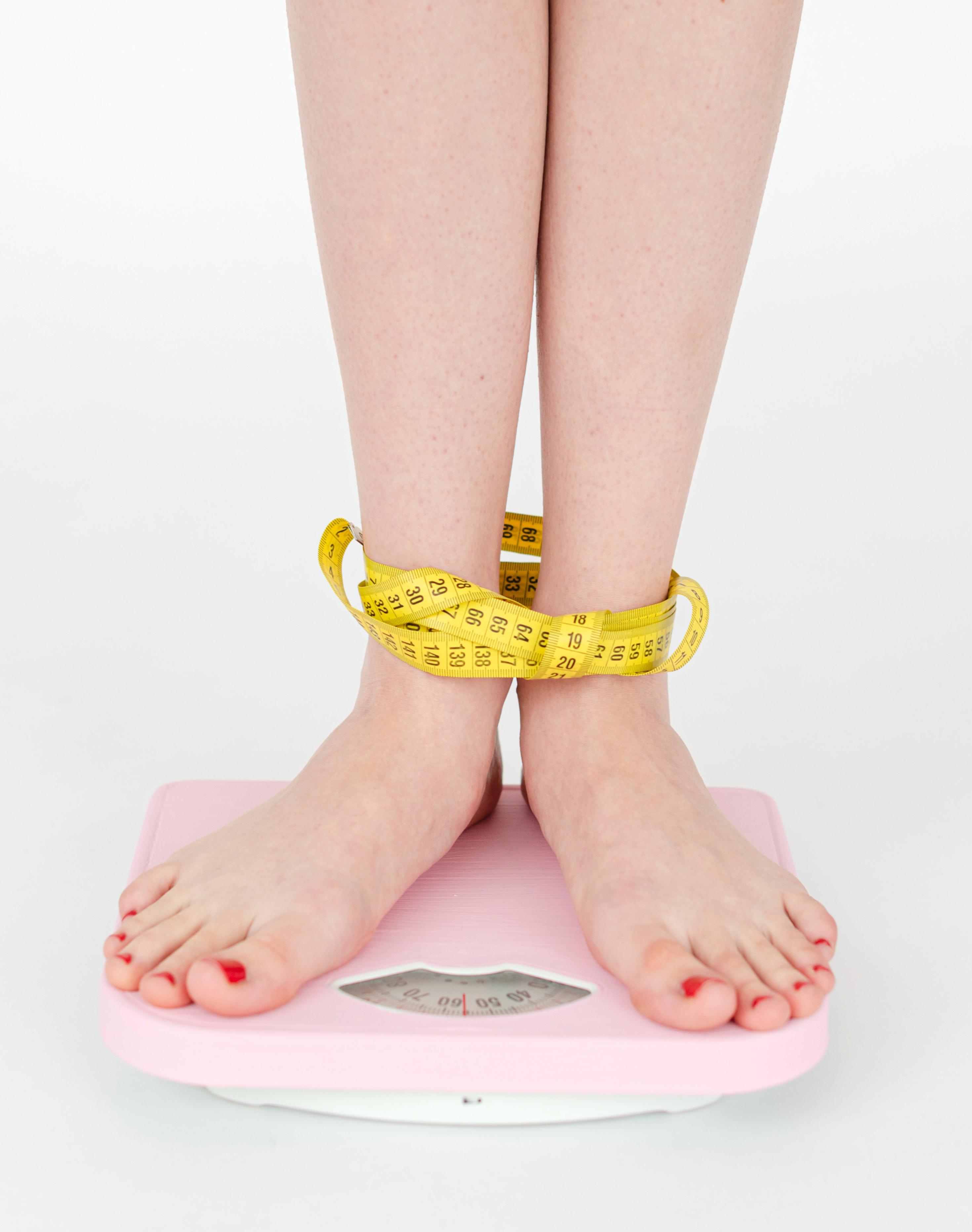
Professionals suggest measuring the waist size, the BMI index, and if the person has two or more risk factors listed above. This would then give a more accurate idea of if the person should consider losing weight.
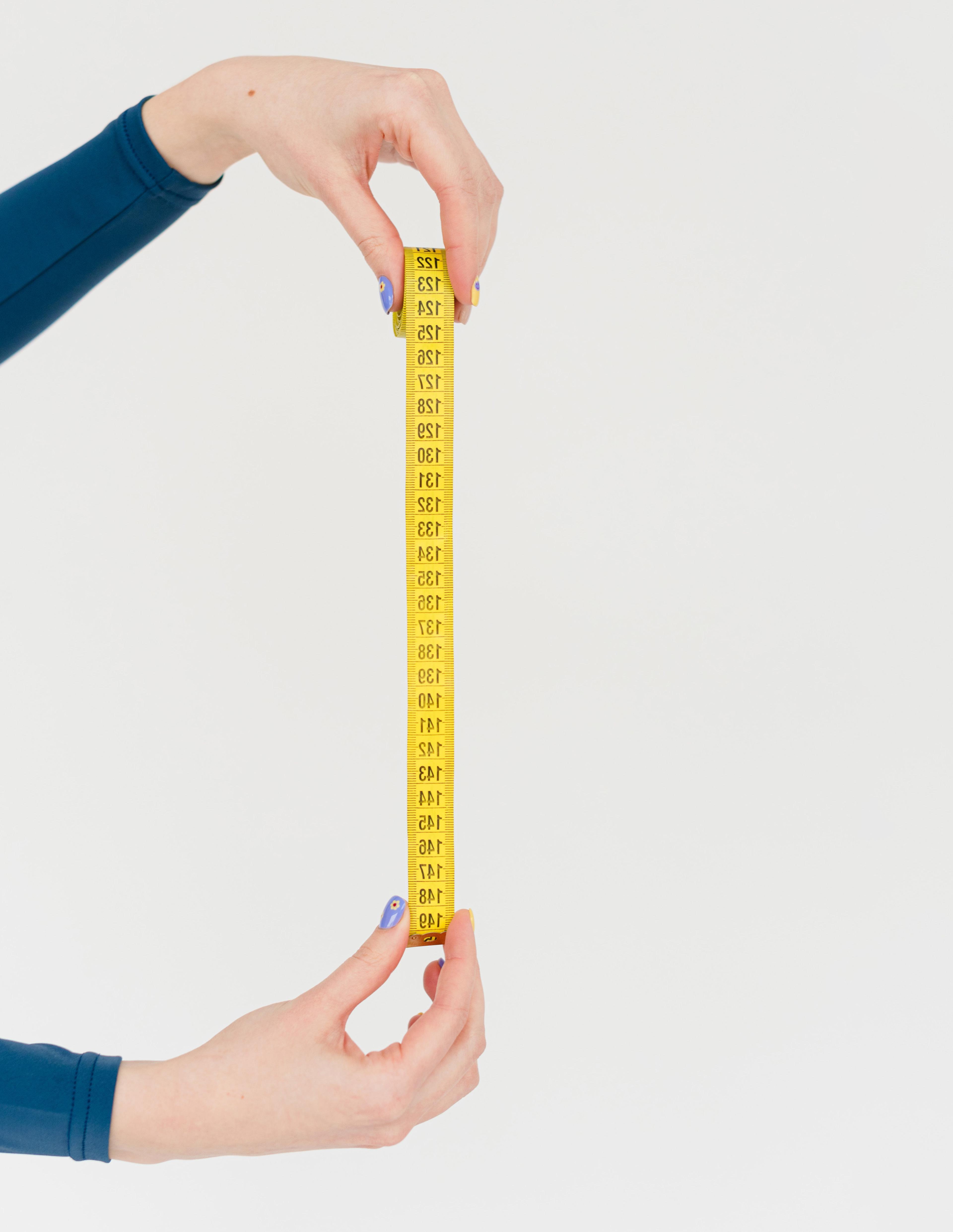
Arguably, BMI’s biggest fault is that it does not take into account a person’s body fat versus lean muscle tissue. Unfortunately, this leads to BMI categorizing athletic people as fatter than they truly are.
Age is another factor not accounted for in body mass index scaling. Children are usually categorized in percentile charts rather than BMI scales. Anyone over 20 years old is measured through BMI without any regard to age or sex. Women tend to have overall more body fat than the average male.
It is also important to note that many studies point to the fact that those who have fat around the waist and abdominal organs are at a higher risk for developing health problems than those with fat in other areas of the body. However, this is not considered in BMI. For muscular people, only height and weight measurements simply cannot accurately measure their health, as muscle outweighs fat.
There are times of life when BMI is especially inaccurate such as during pregnancy or breastfeeding for women and in childhood when a person is still growing.
Since the current standard of BMI only includes height and weight, the National Heart, Lung, and Blood Institute (NHLBI) suggests that when medical professionals are assessing people, they should take into consideration three factors: BMI, waist circumference, and risk factors for conditions associated with obesity.
Measuring and adding waist circumference paired with BMI can help assess the risk for heart disease and type 2 diabetes. The CDC says that the risk for these diseases increases when nonpregnant women have a waist size of 35 inches or more and men have a greater waist size than 40 inches. So evaluating this aspect of health can make a better way of measuring health while still including BMI.
When assessing BMI and waist size, risk factors for obesity should also be considered. Things such as high blood pressure, high cholesterol, high blood sugar levels, history of family heart diseases, and high consumption of alcohol or smoking cigarettes can all influence obesity risks to the heart. Professionals suggest measuring the waist size, the BMI index, and if the person has two or more risk factors listed above. This would then give a more accurate idea of if the person should consider losing weight.

BMI is complicated in terms of determining if it is accurate and useful for people’s health. Since it does not take into account age, race, ethnicity, sex, or muscle mass, it is hard to say if it is the best way to determine if you should lose weight. In addition, risks increase as BMI increases. However, it is not to be automatically assumed that your health is poor if your BMI is high.
Waist circumference paired with BMI and risk factors may be the best way to determine one’s healthy weight. The thing about BMI is if it is combined with other health factors, it would be much more useful in determining one’s health. It is not necessary to completely throw out the idea of BMI, but it is important to take into account other factors along with BMI rather than just considering BMI.
This topic has been highly debated for years, with very little change in presentation at a doctor’s office. If BMI concerns you, discuss it with your healthcare provider and see what they say regarding other factors being considered. Research this topic more if you want to determine your BMI and how it should influence your future!

An Integrative Psychiatrist for over 30 years, Dr. Cass described how the practice of medicine was woven into the fabric of her life from an early age. She fondly recalls how her father, a family doctor, included her in his world of medical practice, considered her his “helper” in his office suite at their home in Toronto, and took her along on house calls. In time, and with his encouragement, Cass chose medical school over nursing or physical therapy, which were the likelier choices for a woman at the time, and she has not looked back since.
Dr. Cass has always been one to think outside of the box - to see what works and why. For example, during her earlier years of practice, she observed that medications were frequently ineffective, not curative, and often had unpleasant side effects, so she began experimenting with different approaches. So rather than prescribing medication as the first line of care or treating solely based on symptoms, as an Integrative Psychiatrist, she began looking “under the hood.” She has continued to evaluate individuals biochemically and physiologically to find the root cause of their problems. And the good news is most issues uncovered within her patients can be corrected naturally.
“We have a built-in natural pharmacy, and medications aren’t really contributing to the healing process. Rather, they are only suppressing symptoms and also may have side effects, some quite serious. In my niche of psychiatry, we see how people can become dependent on them, even addicted, and they’re unable to get off the medications even when they have stopped being effective. So, I’d rather start by looking for the root cause and treating accordingly,” explains Dr. Cass.
These root causes can run the gamut from infections such as Lyme, viruses, or mold, or toxicities such as heavy metals or chemicals to any number of nutrient deficiencies. But you must know to look for them, then treat the person with the right natural products targeting the specific situation.
“What’s very satisfying to me is that I can most often help people withdraw successfully from problematic medication, or preferably, not go on it in the first place. So often, people are on one or more medications that have stopped working but still produce side effects, such as headaches, nausea, social or work restrictions, issues with memory and clear thinking, sexual problems, and even suicidal and homicidal thoughts, which tragically, are often carried out,” she said.
The challenge is that these individuals are unable to stop the meds without experiencing difficult withdrawal symptoms. Called discontinuation syndrome, it’s like withdrawing from any addictive substance like alcohol or heroin. However, according to Dr. Cass, by doing an in-depth evaluation, then gradually adding the correct supplements to support their brain chemistry, they can gradually taper off the medication safely and effectively.
“I must add here that going off medication suddenly is ill-advised and even dangerous. It should be done under the care of a knowledgeable physician,” she made sure to share.
Dr. Cass’ work as a practitioner is entirely virtual, but more distinctive is her unique approach.
“The mainstream psychiatrist takes care of the brain and prescribes medication to suppress symptoms. Sometimes, as in acute situations, medication may be warranted, preferably short-term, but for the most part, it is vastly overused, to the person’s detriment,” she said. “Rather than individual treatment by various specialists, my approach focuses on treating the entire person. So, for example, in mainstream medicine, if someone has gastrointestinal issues and anxiety, they will generally see a gastroenterologist and a psychiatrist, who will treat them entirely separately. In the integrative approach, we are aware of the gut-brain connection. By diagnosing the state of the microbiome (gut bacteria) and finding dysbiosis or a preponderance of bad bacteria, we treat by restoring balance with such supplements as probiotics and prebiotics. This can restore balance to the brain neurotransmitters, thereby resolving gut and mood issues.”
Dr. Cass has written several books on her experience and treatments that uncover the mind-body and body-mind connection. For example, her popular book, 8 Weeks to Vibrant Health, deals with such topics as depression, anxiety, digestion, weight, hormones, blood sugar issues, toxins, food allergies, and stress, all of which comprise the body’s physiology.
“Rather than individual treatment by various specialists, my approach focuses on treating the entire person.”
- Dr. Hyla Cass


Dr. Cass instructs readers on how to clean up their diets, which goes a long way to creating good health. For example, food high in sugar and processed chemicals can poison the body and harm brain function. She notes that over the past ten years or so, it has become more challenging to treat patients because they eat far more chemically laden, nutrient-deficient fast food and are exposed to increasing amounts of toxins in the air and water.
“People’s immune systems aren’t as good as in the past because the toxins actually reduce the immune system’s ability to fight infection, making them likely to succumb,” she said.
She then helps them choose the right supplements based on guidance from specific questionnaires in the book. Finally, she advises you to consult a physician, preferably holistically oriented, if anything is more severe or persistent.
Like many professionals in the field, Dr. Cass switched her practice to virtual when COVID hit and has maintained it that way ever since.
When asked to give us a specific example of how her approach differs from the mainstream, she recounted the case of a 42-year-old male patient with crippling anxiety and depression and serious anger issues. His pyroluria questionnaire showed a high score. This genetic and/or possibly stress-related condition is not uncommon and can be remedied simply by supplying specific missing nutrients.
“The pyroluria caused him to eliminate excessive amounts of B6 and zinc, cofactors in making neurotransmitters, the chemical messengers in our brain that determine mood, focus, memory, and ability to think clearly. As a result, he experienced brain issues related to those deficient neurotransmitters - anxiety (GABA), depression (serotonin), and excessive anger (serotonin). Your body’s making neurotransmitters is like baking a cake. You need to have all the right ingredients, or neither the cake nor the neurotransmitter will come out right!” according to Dr. Cass.
Dr. Cass prescribed specific supplements to counter this, and after just a few days, he was amazed and grateful (as was his wife!) to report that he felt much calmer and not anxious for the first time in forever!
“The meds weren’t working for him. So, why give somebody a strong medication when natural nutrients targeted toward a specific issue like this work much better - a simple, safe, and effective solution. But unfortunately, one contribution to this over-medication is the media marketing of meds. You watch TV, and you find out that a medication will help you to reach nirvana – then there’s a whole list of scary side effects that are repeated at super high speed and often end with ‘death,’” she explained.
On the other hand, all kinds of excellent old remedies are coming back in style, this time with scientific proof behind their success. For example, in recent years, there has been a rediscovery of the clinical use of cannabidiol, or CBD, for various mental health and overall health conditions, from stress and worry, poor sleep to social fears, low mood, pain, and far more. Although derived from the cannabis plant, the source of marijuana that can get you high, CBD doesn’t do that but instead has many documented medicinal qualities. Cass has incorporated it into her practice with great benefit to her patients. Wanting complete quality control over the CBD, she prescribed and ensured its purity and potency; she came out with her own brand, available on her website.
“We know our organic growers, who provide the raw hemp. The CBD is then extracted in our lab, bottled, and distributed. An independent third-party lab tests each batch. So that’s how I have access to pure and effective organic CBD for my patients and readers,” she said.
Dr. Cass has seen and studied enough over the years to truly trust our bodies’ natural chemistry. As a result, her treatments are at the forefront of psychiatry and have changed how people view modern medicine.
“You don’t necessarily need prescription pharmaceuticals for your brain to work as it should. We have the best pharmacy inside us, and when you know how to intervene correctly, you can make it work for you in the best way possible!” she concluded.
For more on Dr. Cass’ unique approach to mental health, you can download her free eBook, Reclaim Your Brain: Enhance Your Mind, Mood, Energy, and Memory.
Cloaked in the soft reflections of a contemporary black patina, the “Three Trumpets” dance to music that we can imagine. They spring from a world of hope and gratitude, and carry in their gestures a sense of freedom. They are both earthly and material, and other-worldly in their grace and light hearted spirit. Joy is the music of the “Three Trumpets,” and their carefree dance beckons us towards a bright and hopeful future


Anxiety is a common mental health condition that affects millions of people worldwide. It can manifest as persistent worry, fear or unease, and can significantly impact a person's daily life. While anxiety can be challenging to manage, there are some practical strategies that can help lessen its impact.
It is important to see a medical professional before trying anything extreme to reduce anxiety.gh temperatures and the coldest chills, it isn't functioning as it should. A home humidifier, though, changes everything.


Relaxation techniques are effective tools for managing anxiety as they help calm the body and mind. One such technique is deep breathing, which involves taking slow, deep breaths in through the nose and exhaling slowly through the mouth. This can help reduce the physiological symptoms of anxiety such as rapid heart rate and shallow breathing. You can practice deep breathing for a few minutes whenever you feel anxious or incorporate it into your daily routine as a proactive measure to manage anxiety.
Progressive muscle relaxation is another effective technique. It involves systematically tensing and releasing different muscle groups in the body, which can help reduce muscle tension and overall stress. To practice progressive muscle relaxation, find a quiet and comfortable space, and start with one muscle group, such as the shoulders or hands. Tense the muscles for a few seconds, then release and relax them. Move on to the next muscle group until you have worked through your entire body. This technique can be done before bedtime to promote relaxation and better sleep.
Cognitive Behavioral Therapy (CBT) is a widely used and evidence-based approach to managing anxiety. It focuses on identifying and challenging negative thoughts and beliefs that contribute to anxiety and replacing them with more realistic and helpful thoughts. CBT techniques can be practiced on your own or with the guidance of a mental health professional.
One effective CBT technique is thought journaling. This typically involves keeping a journal and writing down anxious thoughts as they arise. Analyzing these thoughts by asking yourself if they are based on facts or assumptions and then challenging any irrational or negative beliefs can help aid anxiety. Taking them and replacing them with more balanced and rational thoughts is the idea of journaling.
Another CBT technique is exposure therapy, where you gradually face and confront situations that trigger anxiety in a safe and controlled manner. This can help desensitize you to the triggers and reduce anxiety over time. Start with small steps and work your way up to more challenging situations, with the support of a therapist if needed.
Lifestyle changes can also play a significant role in managing anxiety. Regular exercise has been shown to reduce anxiety symptoms by releasing endorphins, improving mood, and reducing stress. Aim for at least 30 minutes of moderate exercise most days of the week. Choose activities that you enjoy, such as walking, jogging, dancing or yoga and make them a regular part of your routine.
Prioritizing good sleep hygiene is also crucial for managing anxiety. Poor sleep can exacerbate anxiety symptoms, so establish a consistent sleep routine that includes going to bed and waking up at the same time each day, avoiding caffeine and electronic devices before bedtime, and creating a calming bedtime routine, such as reading or practicing relaxation techniques.
In addition, be mindful of your diet and consider making healthy food choices. Limit or avoid alcohol, caffeine and nicotine as they can worsen anxiety symptoms. Instead, opt for a well-balanced diet with plenty of fruits, vegetables, whole grains, lean proteins and healthy fats.
If you are experiencing anxiety, it is best to consult with a medical professional. These techniques can help manage anxiety temporarily but speaking with a medical professional is imperative for long-term care and health.



we've all experienced those days when our mood takes a dip, and we're left feeling down and sluggish. While external factors like stress, lack of sleep and other emotional triggers can contribute to our mood swings, did you know that the food you eat can also play a role in influencing your mood? The link between nutrition and mental health is gaining more attention, and research suggests that certain foods can help boost your mood naturally. So, if you're looking to give your mood a lift, here are five foods that you might want to consider incorporating into your diet.
Good news for all you chocolate lovers! Dark chocolate, specifically the one with at least 70% cocoa content, has been found to have mood-enhancing properties. It contains compounds such as flavonoids, which are powerful antioxidants that can help reduce inflammation in the body and improve blood flow to the brain. Dark chocolate contains small amounts of a compound called phenylethylamine (PEA), which can stimulate the release of endorphins, the feelgood hormones in the brain. So, indulging in a small piece of dark chocolate can not only satisfy your sweet tooth but also help elevate your mood.
Fatty fish like salmon, mackerel and trout are not only delicious but also rich in omega-3 fatty acids. Omega3s are essential fats that play a crucial role in brain health and have been shown to have mood-stabilizing properties. Studies have found that omega-3s can help reduce inflammation in the brain, increase the production of serotonin (a neurotransmitter that regulates mood), and improve overall brain function. Including fatty fish in your diet regularly can be beneficial for maintaining a positive mood and supporting your mental well-being.
When it comes to vegetables, leafy greens like spinach, kale and Swiss chard are nutritional powerhouses that can do wonders for your mood. These greens are loaded with important vitamins and minerals such as folate, magnesium and vitamin C, which are known to play a role in brain health. Folate, in particular, has been linked to the production of serotonin and dopamine, two neurotransmitters that are associated with mood regulation. Magnesium has been shown to have a calming effect on the brain and can help reduce symptoms of anxiety and depression. So, make sure to add plenty of leafy greens to your salads, smoothies, or stirfries for a mood-boosting dose of nutrition.
Nuts and seeds are not only convenient and tasty snacks but also great for your mood. They are packed with healthy fats, fiber, and protein, which can help stabilize blood sugar levels and keep you feeling full and satisfied. Nuts and seeds are a good source of vitamins and minerals like vitamin E, selenium and zinc, which have been shown to support brain health and improve mood. For instance, almonds are high in magnesium, while pumpkin seeds are rich in zinc, both of which have been linked to better mental health. So, grab a handful of nuts or sprinkle some seeds on your yogurt or oatmeal for a crunchy and mood-boosting snack.
Berries are not only delicious and colorful but also incredibly beneficial for your mood. They are loaded with antioxidants, fiber and vitamins, which can help reduce inflammation, protect brain cells from damage, and support overall brain health. In particular, berries like blueberries, strawberries and raspberries are rich in anthocyanins, which are a type of antioxidant that has been shown to have anti-inflammatory and neuroprotective properties. These compounds can help improve cognitive function and mood.
Incorporating these foods into your diet can improve your mood drastically, so the next time you are feeling down, try eating one or more of these foods!



TOPDOC CLINICS MIAMI AT THE FOUR SEASONS OFFERING BODY CONTOURING, FACIAL REJUVENATION, & LASER THERAPY


The miracle of life — the expectation, the long wait and, of course, the delivery itself — is physically exhausting for women. So, it's no wonder why they need a bit (or more) of recovery time before taking on the new role as mothers. But is rest the only variable in the recovery equation?
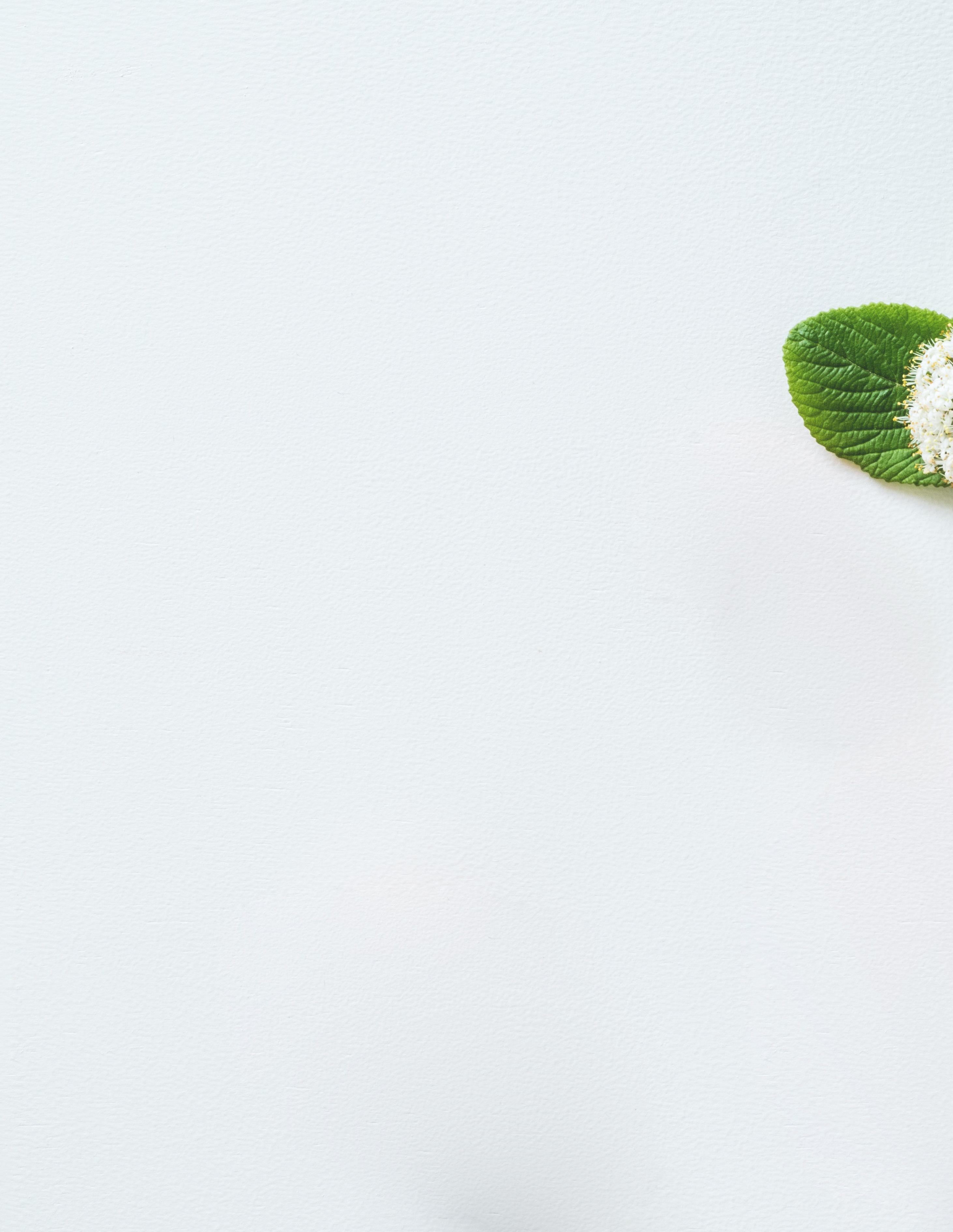
You may have heard that some foods will speed up postpartum recovery. However, you may also have been told the opposite — that other foods can be harmful to you and your baby. Eating after delivery should be the straightforward part of the recovery process, but the vast amount of information surrounding the subject can be challenging to sort through. So are there things that new moms should and should not be eating after giving birth?
It is vitally important for mothers to obtain proper nutrition from food after labor. Pregnancy requires women to eat for themselves and their babies, and labor is an exhausting process that burns a ton of muchneeded calories. A healthy postpartum diet should also consider the baby's needs if the mother chooses to breastfeed since chemicals that women ingest while lactating can be passed on to babies through breast milk. However, diet restrictions are typically looser
when eating after delivery than those that apply during pregnancy — a new mother needs all the nutrients she can get after delivery!
Since many different nutrients are depleted during pregnancy and labor, it's crucial to eat various foods to bring the nutritional intake back into balance, such as:
• Foods that are high in fiber can help prevent postpartum constipation;
• Foods that are rich in protein can help mothers recover physically from labor;
• Iron, which can be found in leafy vegetables and meats, is essential for creating new blood cells.
• Foods that contain potassium can help reduce swelling.
A postpartum diet should include more calories than would typically be required in order to make up for those lost during labor. For women who choose to breastfeed, about 300-500 additional daily calories are needed to nourish both the mom and the baby.
Hydration is also imperative, especially for mothers who choose to breastfeed. Mothers who breastfeed need up to 96 ounces of fluids per day, while those who use formula need about 80 ounces.
Eating after delivery can be difficult since pregnancy and breastfeeding deplete women of so many essential

nutrients. To mitigate this loss, some doctors recommend that mothers continue to use prenatal vitamins while breastfeeding. Talk to your doctor to find out what supplements are right for you and your baby.
Immediately after giving birth, mothers will need to replenish calories lost during labor and bring in nutrients that can contribute to the recovery process. Some foods that will provide the necessary nutrients include:
• Salmon: rich in DHA and low in mercury, so it's a perfect food for breastfeeding moms.;
• Whole-wheat bread can provide folic acid, fiber and iron.
• Fresh fruits — notably citrus fruits like oranges —are a good source of vitamin C.
• Eggs and some varieties of seafood make excellent sources of protein, which helps the body recover from childbirth.
Breastfeeding mothers need to provide nutrients that can support their babies' development, such as:
• Choline is vital in the development of babies' nervous systems. Women should take in about 550 milligrams per day while breastfeeding.
• Iodine is essential for brain development in babies. While breastfeeding, women require about 290 micrograms per day. Iodine can be found in table salt, dairy products and some types of seafood.
• Omega-3 fatty acids are also vital for the proper development of babies' brains. Salmon, sardines and anchovies are rich in omega-3 fatty acids.
Sugary, processed foods might be tempting after labor, but they should be avoided — they may provide temporary satisfaction but do not promote the long-term health of mothers or babies. Instead, mothers should focus on eating a variety of healthy foods, meeting their caloric needs and staying hydrated.
Some specific foods can pass harmful chemicals on to infants when consumed by breastfeeding mothers, so they are best avoided.
• Mothers who choose to breastfeed must not consume any amount of alcohol.
• Mercury can harm babies, so mothers who choose to breastfeed should avoid the consumption of fish.
• Caffeine can keep babies awake, so mothers who breastfeed should stay away from coffee.
The consumption of the placenta by a mother who has just given birth — known as placentophagy — is believed to boost energy levels and enhance the quality of breast milk. Since these claims have not been tested in a scientific setting, the potential health benefits of placentophagy are purely speculative. However, it is known that the bacteria found in the placenta can be harmful when ingested and passed on to the baby via breast milk. Since placentophagy is unnecessary and its potential benefits have not been proven, it is likely best for mothers to forego the practice altogether. Instead, doctors typically recommend a healthy diet and light exercise to boost postpartum health.
After giving birth, women may seek to lose some of the weight gained during pregnancy. However, mothers who lose weight too rapidly may produce less breast milk. Additionally, the chemicals found in diet pills can be harmful to infants. Therefore, gradual weight loss is recommended.
A healthy diet can be paired with exercise to promote weight loss after birth. For example, a new mother can incorporate walking and other low-impact exercises into a postpartum weight-loss regimen under her doctor's supervision.
Postpartum health can be stressful to navigate, particularly regarding nutrition. Even after babies are born, their mothers' nutritional choices can still impact their development. However, new mothers don't need to fear— they can aid the process of recovery and contribute to their babies' development by making healthy choices and excluding a few dangerous foods from their diets. If you're a new mother, start planning a healthy diet right away!


 WORDS BY CATHERINE PANNELL
WORDS BY CATHERINE PANNELL
Period cramps can cause intense pain for one to two days out of each month in over half of women. They can be frustrating, distracting and even debilitating.
Luckily, home remedies and lifestyle practices can help provide pain relief during periods for most women, and more advanced options are available to treat severe cramps. So, what are the most common treatments for period pain relief, and how do they work?
Period cramps occur when the uterus contracts and begins to shed the uterine lining. The pain associated with period cramps typically begins around the first day of a menstrual period and lessens as prostaglandin levels drop.
Different women have different baselines for normalcy when it comes to menstrual pain. Therefore, it's essential to understand what's normal for you and your body and investigate potential causes of abnormal period pain.
Many options are available for managing it effectively regarding normal period pain. Options for managing period cramps range from simple home remedies to prescription medications. In many cases, the best pain relief for menstrual cramps comes from combining several methods, like exercise, warmth and healthy eating. So, how can you relieve painful period cramps?
A heating pad or hot water bottle is one of the most common and effective methods for pain relief during periods. Because the uterine wall is composed of muscle, warmth allows it to relax. One study found that the pain relief provided by a heating pad was comparable to the beneficial effects of ibuprofen. Other forms of warmth, such as a hot bath or shower, can also be effective.
Exercise is another excellent way to promote your overall health and relieve cramps while on your period. Although it might seem contradictory or counterproductive to exercise when you're in pain, moving can help release endorphins and decrease pain. Yoga, walking and other forms of aerobic exercise are fantastic options.
Regular exercise between periods can also help make periods less painful. Exercise can also have a wide range of other positive impacts on your health, so it's a good idea to immediately incorporate it into your routine.
Did you know that the food you eat can impact the level of pain you experience during your period?
First, staying hydrated is essential, as drinking plenty of water can help reduce bloating. Conversely, caffeine can worsen period cramps, so it's best to avoid it during your period.
Second, it's best to avoid foods that contain excessive amounts of salt, sugar or trans fat. These foods can increase the pain associated with menstrual cramps and lead to increased bloating and inflammation.
Anti-inflammatory foods with high magnesium content can help relieve painful period cramps. Some helpful nutrients, such as vitamin D and magnesium, can be taken through dietary supplements, though you should consult your physician before adding new supplements to your diet). Managing the foods you eat and providing your body with the proper nutrients can help provide pain relief for period cramps.
A healthy diet can help manage period cramps, but it might not always be enough. Many women use overthe-counter medicine for pain relief during periods. Naproxen sodium or ibuprofen are typically effective as soon as symptoms of period pain occur. However, overthe-counter medications might not be strong enough for more severe period cramps. In such cases, a doctor might prescribe prescription-strength nonsteroidal anti-inflammatory medication.
For some women, hormonal birth control might also be an effective way to manage period pain. Although not a painkiller, it can address hormone imbalances and reduce irregular periods. Talk with your doctor about any medications you want to try and ensure that new medications won't interfere with any current ones.
You may not need to pick up medication from a pharmacy to relieve period pain. Most professionals find that evidence for the efficacy of many forms of alternative medicine is inconclusive, but some methods are helpful.
Acupuncture, a treatment that involves the insertion of thin needles into the patient's skin, is often used to treat muscle cramps. Acupressure can have a similarly relaxing effect on the muscles.
Herbal teas are a traditional remedy for period pain relief. Even if there's little scientific evidence for the benefits of certain herbs to treat period cramps, warm teas can still help muscles relax.
Some women also recommend the use of essential oils for period pain relief. One study found that massaging essential oils into the lower abdomen relieved painful period cramps.


A variety of methods can make your period cramps more bearable. If you struggle with painful period cramps, you may not need to search for a complicated medical solution. Many home remedies are easily accessible and can even positively affect other aspects of your health.
However, if your period cramps are debilitating or have suddenly worsened, it might be time to consult a physician. Severe period cramps might indicate underlying medical conditions like fibroids, ovarian cysts, endometriosis, PCOS or even bacterial infections.


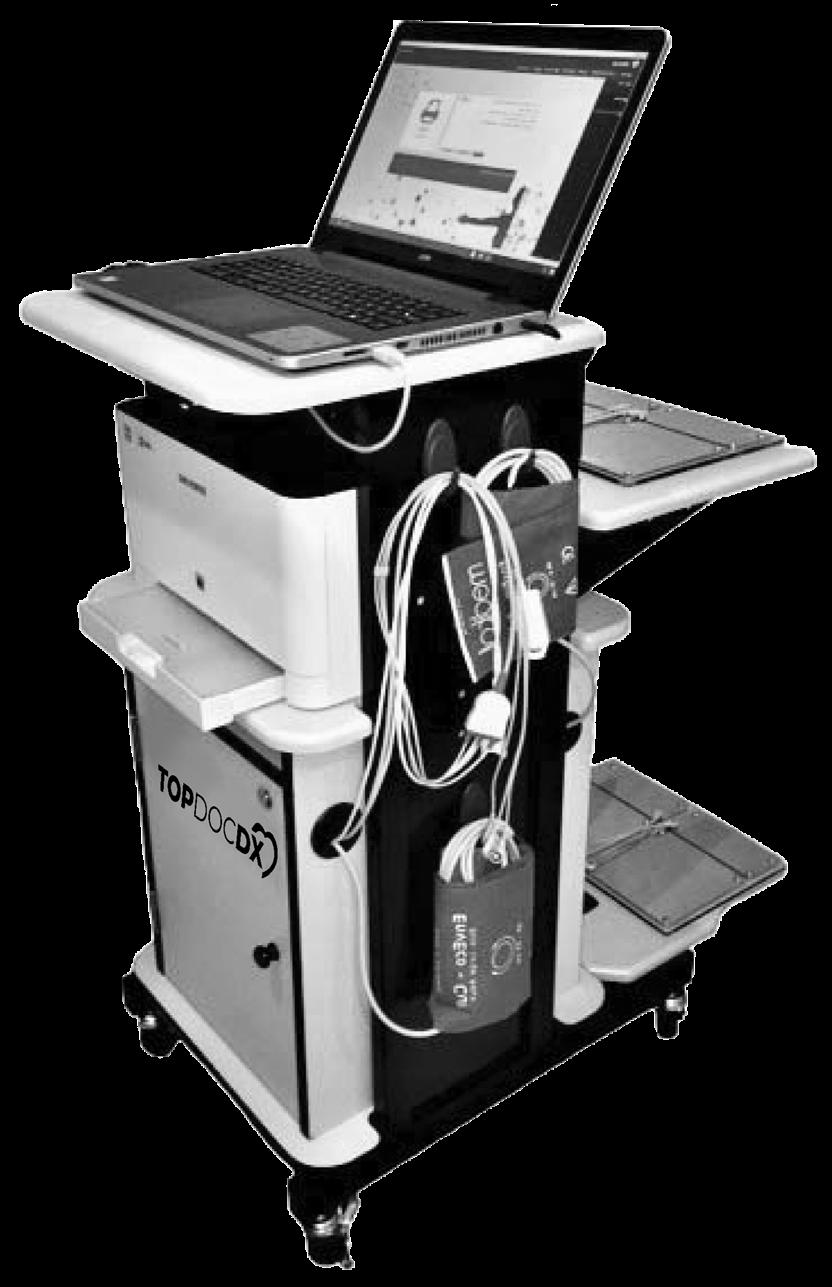

TopDocDX presents a real-life picture to the patient, with all its positive and negative influences. Therefore, physicians will have an enhanced understanding of the patient’s overall health. This clinically powerful and non-invasive testing system for hidden diseases in asymptomatic patients provides the patient with an inside-out look on their health.
15-MINUTE NON-INVASIVE ON-SITE DIAGNOSTIC TESTS


